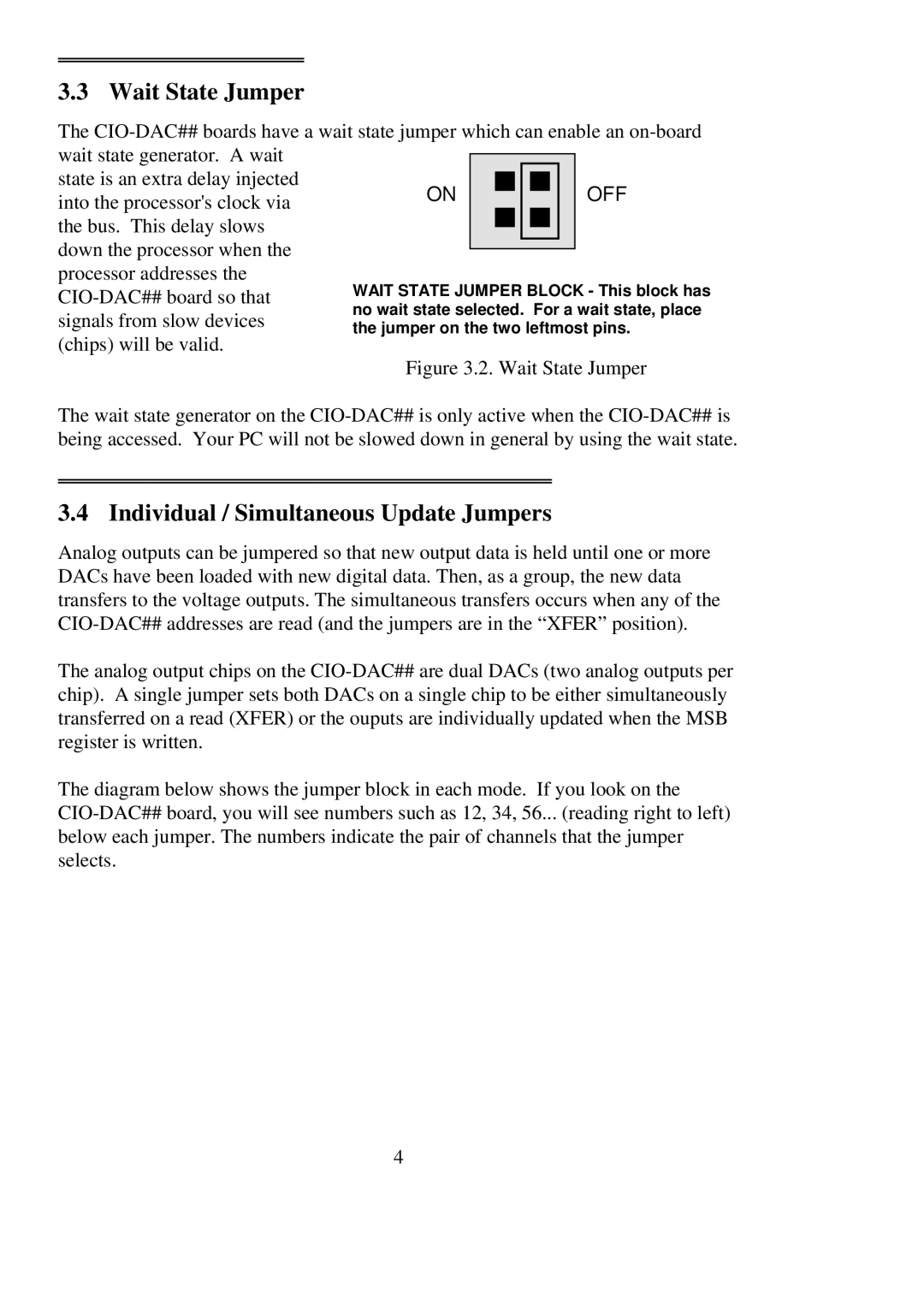
Figure 3.2. Wait State Jumper
The wait state generator on the CIO-DAC## is only active when the CIO-DAC## is being accessed. Your PC will not be slowed down in general by using the wait state.
3.4 Individual / Simultaneous Update Jumpers
Analog outputs can be jumpered so that new output data is held until one or more DACs have been loaded with new digital data. Then, as a group, the new data transfers to the voltage outputs. The simultaneous transfers occurs when any of the CIO-DAC## addresses are read (and the jumpers are in the “XFER” position).
The analog output chips on the CIO-DAC## are dual DACs (two analog outputs per chip). A single jumper sets both DACs on a single chip to be either simultaneously transferred on a read (XFER) or the ouputs are individually updated when the MSB register is written.
The diagram below shows the jumper block in each mode. If you look on the CIO-DAC## board, you will see numbers such as 12, 34, 56... (reading right to left) below each jumper. The numbers indicate the pair of channels that the jumper selects.
4
3.3 Wait State Jumper
The
wait state generator. A wait |
|
|
|
|
|
|
| |
|
|
|
|
|
|
| ||
state is an extra delay injected | ON |
|
|
|
|
| OFF | |
|
|
|
|
| ||||
into the processor's clock via |
|
|
|
|
| |||
the bus. This delay slows |
|
|
|
|
|
|
| |
|
|
|
|
|
|
| ||
down the processor when the |
|
|
|
|
|
|
| |
|
|
|
|
|
|
| ||
processor addresses the | WAIT STATE JUMPER BLOCK - This block has | |||||||
no wait state selected. For a wait state, place | ||||||||
signals from slow devices | ||||||||
the jumper on the two leftmost pins. | ||||||||
(chips) will be valid. | ||||||||
|
|
|
|
|
|
| ||
|
|
|
|
|
|
|
| |
|
|
|
|
|
|
|
| |
